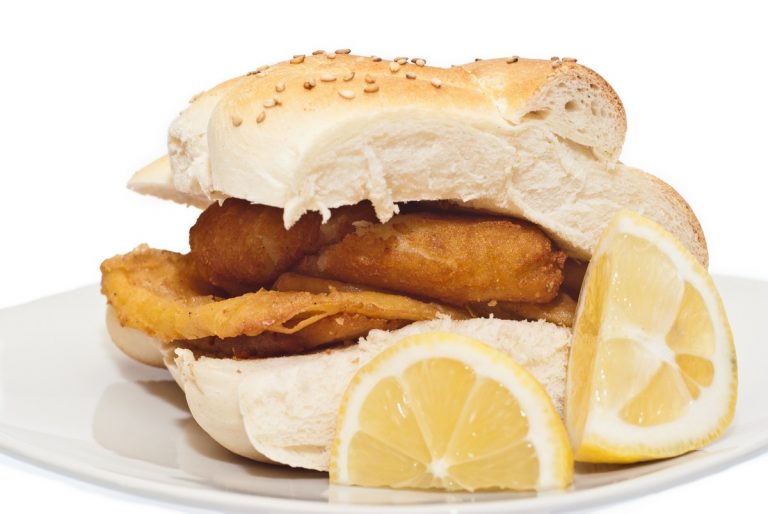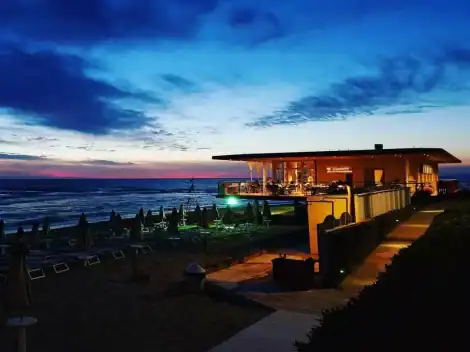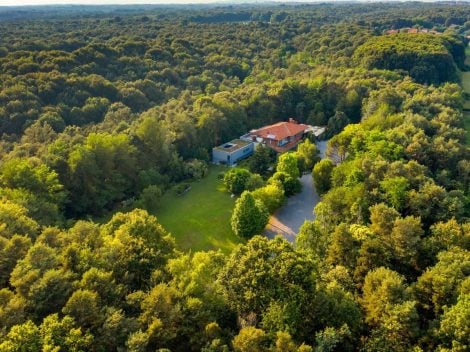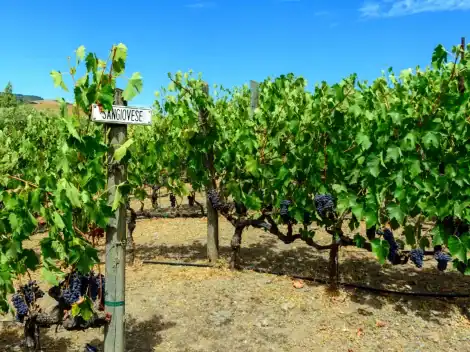Aglio rosso di Nubia (Aglio di Paceco o Aglio di Trapani) garlic
Red garlic from Nubia is a key ingredient in the cuisine of Trapani. Nubia is a small town in the vicinity of Paceco in the Trapani province. The cultivation of this particular bulb happens mostly in the natural Saline di Trapani reserve and Paceco as well as in the neighboring areas of Erice, Buseto Palizzolo, Valderice, Marsala, Salemi and Trapani. Its bright red hue is owed to high levels of allicin, that is the substance that lends the product its characteristic and pungent aroma and medicinal properties. This garlic is harvested in May-June in the early hours of the morning to help foragers find the bulbs thanks to the dew that collects on the shoots. This is for the most part still done by hand. So as not to impoverish the soil, the cultivation is rotated alternating crops of yellow Paceco melon. In Trapani this local garlic is used to season couscous and in the sauce for Busiate with local Trapanese pesto: pounded garlic, pizzuto variety tomatoes, almonds, basil and olive oil. Locally this dish is called "pasta cull'agghia" (pasta with garlic).
Alaccia salata di Lampedusa
This local sardine was part of the everyday diet of Lampedusa fishermen during long haul sponge harvests in the Mar di Sicilia. Alaccia (Sardinella aurita) is very similar to the common variety sardine, but slightly less elongated and overall larger. Rich in organoleptic properties, in Omega3 fatty oils and is easy to digest. Still fished like in olden days with a lampara fishing lamp and a fishing net that exploits the plankton – and consequently the fish that feed on it – attracted by the light to the surface. The season for fishing this sardine is from May to November, and is either eaten marinated in garlic, lemon and parsley or oil-preserved, or dredged in flour, fried and then simmered in a vinegar reduction.
Bottarga di tonno
Tuna roe is a specialty common to various areas of Sicily, including Trapani, the Egadi Islands, Marzamemi and Capo Passero, at the southeastern tip of the island. One particularly renowned bottarga is the one produced in Favignana where tuna fishing is not only a commercial activity but also a centuries old ritual. Many refer to it as “Sicilian tuna eggs” as it is made starting from precisely the eggs of the fish. The ovary sack is extracted whole from the female, rinsed and covered with sea salt, then finally pressed and aged. High in protein, this product is sold whole as a block that can be grated or sliced, or already ground to a powder, obviously this form is less prized. Either made with reef mullet or local red tuna lately a more sustainably yet less select kind has also been obtained by albacore. Bottarga is a very savory food: therefore it is used in small amounts, either grated over unsalted pasta or as an antipasto, sliced on buttered croutons.
Caciocavallo (palermitano e ragusano DOP) cheese
Caciocavallo is a stretched curd cheese that was once popular in all the areas of the Italian South. In Sicily it is made in two varieties, the Palermo variety and the Ragusa variety, both protected by the DOP appellation. The Palermo kind also known as caciocavallo di Godrano, is made exclusively with the milk of autochthonous cinisara cows: black coat, strong and long-living, a species that feeds on unrefined fodder. The color is light yellow, texture is compact texture and the flavor is spicy. It can be consumed “fresh” that is after a 2-week maturation, or aged after 6 months.
Ragusano DOP aka caciocavallo ibleo, on the other hand is made with modicane cow’s milk, these are animals that graze in the pastures around the Monti Iblei. The flavor of the cheese is mild that grows more assertive and spicy with aging, between 4 and 12 months. Like its Palermo cousin this cheese can be enjoyed as an appetizer as is, or melted in baked pasta dishes. An unusual yet special way of eating it is in the “argentiera” fashion: lay slices of it in a pan with a thread of olive oil and browning it slightly on both sides. At the end simmer it with a splash of vinegar, seasoning with minced parsley, oregano and black pepper.
Carciofi (spinoso di Menfi, violetto di Catania) artichokes
Finding a spiny artichoke outside of Sicily is not easy. In the province of Agrigento on the other hand it’s the norm. The ancient spiny artichoke plant is an Autumn crop. The flavor is both crunchy and delicate with intense aromatic notes. Thanks to high levels of lignin – a complex organic polymer in the cell walls of many plants – makes the artichokes rigid and woody thus perfect for oil-packing. Alternatively this artichoke is fire grilled or baked with breadcrumbs and parsley.
The Violetto di Catania is on the other hand a more tender, delicate hybrid variety. It is cultivated in the entire Catania Plain at the foot of Mt Etna, in particular in Ramacca, where it is celebrated with a festival in its name. Ideally stuffed Messinese style, or used in risotto, as a sauce for fresh pasta, grilled, fried or oil-preserved.
Cardi selvatici o Carduna
Cardoons are a wild-growing plant belonging to the artichoke family (Cynara cardunculus), and an appreciated crop in Sicily, particularly in the Palermo province. The stem, which can grow as tall as 5 feet, is edible. The flavor is reminiscent of the artichoke but slightly more bitter and possessing notes of celery. In Palermo is it battered and fried but it is also served as a side dish, au gratin, or braised with chopped tomatoes.
Cappero di Pantelleria
Protected by IGT appellation since 1996, Pantelleria capers are one of the island’s most popular products abroad. The Capparis spinosa, Nocellara cultivar plant grows all over Pantelleria, but it’s the small buds that need to be harvested quickly at dawn before they bloom that define this product. A more local rarity is the fruits of the caper plant, called cucunci. After the harvest, the buds age in a sea salt brine, this halts the blooms from opening and eliminates traces of bitterness. Brine aging lasts 10 days during which they are constantly stirred. Once drained the capers are salt-packed again. After this second phase the capers are ready. Besides flavoring fish dishes like baccalà and tuna, capers are essential in “sciachisciuca”, that is a typical caponata made in Pantelleria, as well as the famous pantesca salad made with boiled potatoes, red onion, olives and capers.
Cavolo trunzo di Acireale
The name of this particular cabbage is how Catania folk jokingly call the inhabitants of the Aci towns: mostly those living in Acireale but also Aci Trezza, Aci Sant’Antonio, Aci Catena, Aci Castello, Aci Bonaccorsi. Cavolo trunzo is in fact grown all over this area, it is a local variety of kohlrabi that draws its character and pungent aroma from the soil of the plains at the foot of Mt Etna. Until the mid-Fifties it was well-known and much used in the area, now there are only a dozen hectares planted in it. Small and pale violet with long leafy branches that shoot from the base, this crop is cultivated in two cycles from May to June and from October to November. The Catanesi eat it pan fried with spaghetti, or made into pesto with tagliatelle, employed in soups and minestrones, raw in salad or stewed and served as a side with local meat entrees.
Cipolla di Giarratana onion
This peculiar onion is best known for its unusual size which can range from 500 grams (1.1 lbs) to 2 kg (4.4 lbs). Some have grown to almost 3 kilos (almost 7 lbs). Despite the size, the flavor is incredibly sweet. Slightly flattened and white, this onion grows in the area surrounding Giarratana on the Monti Iblei mountains, and in the nearby province of Ragusa. For its delicate and never pungent flavor it can be eaten raw in salad or simply dressed with olive oil and salt. It is often stuffed but the best way to employ it is in the so called “scaccia Sciclitana”, that is enveloped in a folded over focaccia with tomato sauce and parsley.
Couscous trapanese
Couscous, or what’s locally known as cùscusu in Trapanese dialect is preparation common to North Africa and Western Sicily. The Trapani area is specialized in this particular dish. So much so that the city hosts an annual couscous fair in the town of San Vito Lo Capo. For western Sicilians, eating couscous is like eating an everyday plate of pasta. This African dish is now a centuries old local naturalized tradition and essential part of the local diet. Minuscule grains of semolina are steamed in the specially crafted terracotta couscous pot whose small holes allow the steam to escape slowly. The method used to obtain the grains by hand is locally called “incocciare”. In Trapani couscous is made with “ghiotta”, an assorted fish broth made using rockfish, grouper, gurnard, prawns, shrimp and Trapani salt mine eels. Pantesco (hailing from Pantelleria) couscous is added with vegetables like bell peppers, eggplant, zucchini and potatoes. The main difference between the Trapani version and the Tunisian couscous is in the condiment, in the use of fish instead of meat and the size of the semolina grains which are normally smaller than in Sicily. Another typical Trapani area dish particularly of the inland, is “I frascatuli”, that is coarsely rubbed grains of semolina steamed and paired with a soup of fava bean puree, carrots, chickpeas and cauliflower.
Fagioli (Fagiolo Cosaruciaru di Scicli and Fagiolo Badda di Polizzi Generosa)
In Sicilian dialect cosaruciaru simply means “something sweet”. Up until the early 1900s the cosaruciaru beans was crucial to local economy. Grown between Scicli and Modica, in the Ragusa province, it is harvested from mid-October to November. The dried version is available all year round. The color is cream white with brown-reddish flecks. Thanks to its delicate flavor it is used in many recipes, mostly used in soups or in salads. It was originally stored with a fistful of ashes to avoid attracting wheat moths.
Fagiolo Badda beans, in Siciliano “Palla”, is a peculiar product. The same plant produces beans of different colors. It is grown in Polizzi Generosa, a small town in the Palermo province in the Monti delle Madonie area, outside of which it is practically unknown. Depending on the specific type it can be ivory colored with pink-orange flecks, or ivory colored with black-violet flecks. Polizzi locals also call it “fasolo badda bianca”, “badda niura”, or “munachedda”. Seeds are planted between June and July and it is harvested approximately 60 days later. The flavor is savory, herbaceous with a slightly briny note. This bean is highly digestible and used in many local dishes: tagliatelle with fresh beans and tomato, “fasoli chi finucchieddi”, which is a soup made with pork rind, badda beans and fennel pollen. Lastly, a peculiar dish, cunigghiu which is a peasant dish made with not beans, tuna belly, baccalà and other vegetables.
Fave larghe di Leonforte
In the Enna province, in the heart of Sicily this fava bean is to this day for centuries cultivated without any form of mechanization. In the past this was a rotation crop alternating with wheat with the important role of providing the soil with nitrogen. In Leonforte these are known as fave cucivuli, that is easy to cook because of how quickly they can be prepared without prior soaking. Harvested between March and May, these fava beans can be eaten both fresh alongside pecorino, or the later crop can be dried and used in soups, pasta dishes or pan fried with pancetta, scallion and pepper in “frittedda”. The dried fava beans is what locals prepare “macco” with, a thrifty way of making big bulk dishes that could serve families for a number of days. One cooked broth with pasta or stale bread; the following day as soup and on the third day, leftovers were left to dry, dredged in flour and fried as fritters.
Gambero rosso di Mazara del Vallo giant red shrimp
Gambero Rosso di Mazara del Vallo, or Gambero Rosso di Sicilia (Aristaeomorpha foliacea) giant red shrimp is a Sicily symbol with a cult following. The species is common to the entire Mediterranean and Atlantic Ocean, but according to the Mazara del Vallo folk the best specimens swim in their portion of sea. Mazara del Vallo, in southwestern Sicily on the Mediterranean only 200 km from North Africa. As the only Italian industrial fishery, it is immediately blast frozen on board to safeguard its precious pulp. In the past fishing boats would even exit the Strait of Gibraltar in order to catch the giant red shrimp, while nowadays the area is more limited. It’s been many years that the local community has been pushing for an origin denomination for this product, unsuccessfully. The name derives naturally from the shrimp’s bright red color. The flavor is unmistakable, the pulp is white and compact. Given its delicate nature it’s best eaten raw, or in fresh pasta dishes.
Lenticchie (Lenticchia di Villalba and Lenticchia di Ustica lentils)
The cultivation of Villalba lentils dates back to the early XIX century peaking in the 1860 and now almost reduced to extinction. A recent rediscovery has however uncovered this simple yet nutritionally essential legume. Large green lentils that are versatile and robust, it requires long cooking times – almost an hour – during which time it does not easily fall apart. Hence its use in salads.
From the large Villalba grains to the tiniest from Ustica. Historically grown on volcanic soils of the small island of Ustica (belonging to the municipality of Palermo) only with manual skills, the tiny grained lentils are brown with greenish hues. It requires no soaking before cooking which lasts about 40 minutes. The best known dishes these lentils are used in are pasta with lentils, made with broken spaghetti; and a lentil and vegetable soup added with fennel pollen and basil.
Mandarino tardivo di Ciaculli
Also known as marzuddu, for its late ripening around the month of March, this mandarin orange gets its name from a small village near Palermo. It is a native and very rare variety with a production which is limited to approximately 200 hectares among the boroughs of Ciaculli and of Croceverde Giardina. This is a fruit which is risking extinction in the coming decade. Small parcels can’t gain from the minimal yields, while selling the land itself for other cultivations is more profitable. The aroma is intense, the peel is thin and concealing very few seeds. This fruit is cultivated exclusively in the organic regimen thanks to its resistance to diseases and temperature swings. The flavor is particularly sweet, and it is commonly used to make marmalades.
Masculina da magghia
In the Catania area it’s common to hear mention of masculina, small anchovies made famous in the Giovanni Verga novel I Malavoglia, which are locally also calledanciuvazzi. Masculina da magghia, in particular, are young anchovies that remain trapped in fishing nets during fishing of larger fish like branzino, tuna, mullet and mackerels. The method used is an ancient fishing technique: the nets called “tratte” are lowered into the calm hours of the night right before dawn. In hoisting up the nets, small anchovies remain trapped in the mesh, causing a natural blood loss, and yielding thus a more tender meat. The elected area for this is the Gulf of Catania, an area that spans from Capo Mulini to Augusta, in April. The daily catch is then hauled to Catania’s popular fish market La Piscaria. The anchovies can be cooked in a variety of dishes, one of the simplest and most traditional recipes is skewered with lemon slices and bay leaves and fire roasted. Another typical dish they are used in is pasta alla catanese or pasta chi masculuna, simply dressed with the pan fried fish seasoned with garlic and fennel pollen.
Melone Giallo Madras, di Paceco or Cartucciaro melon
This could be mistaken for a traditional crop, when in actual fact it was only introduced in the 1990s in substitution of the “old” Paceco melon, known as Madras, with other sister varieties like Campero and Helio. Early crop and with big yields, these melons took the place of the much harder to grow cartucciarovariety, and now part of the new Paceco crop in the province of Trapani. It is harvested between June and August, and oddly prices drop in July due to its overabundance. In the fields surrounding the town of Paceco sheep and goats can be seen grazing in large fields, feasting on the melons. In Trapani this fruit is used in granita and other desserts in addition to bringing it sliced fresh at the table at the end of the meal.
Meusa
In Palermo is home to this popular dish. Once the typical meal of blue collar workers, today it is a widespread street food item known and loved by many mainlanders too. Pani ca meusa is a soft bread sesame roll called vastedda that's filled with chopped veal spleen fried in lard. Some variants include in addition to spleen also chopped bovine lung. The master meusarouses specific tools to prepare the dish: a large inclined pan where the lard is kept heated waiting for the chopped spleen. This is a dish that can only be cooked right before serving. The roll can be schittu (bachelor) or maritatu (married): meaning that it can be stuffed with spleen alone or – in the second case – also added with chopped caciocavallo or ricotta.
Olive (biancolilla, tonda iblea, nocellara del belice, cerasuola)
Sicily boasts an enormous diversity of olive varieties, currently about 25 with another 30 genotypes under observation. Extra virgin olive oil is a key element in Sicilian cuisine, it represents the condiment of every plate as well as being used for frying. The most important olive varieties are biancolilla, cerasuola, nocellara del Belice, tonda iblea. The first being the most diffused, mostly in the Trapani area and Palermo area. It produces mildly fruity oils. The cerasuola olive, mostly grown in the provinces of Agrigento, Palermo and Trapani, produces oils with medium to intense fruity flavor depending on maturation. Nocellara del Belice, protected by DOP denomination is mostly grown in Trapani and produces a fruity and intensely aromatic oil with bold structure and notes of tomato. Tonda iblea,mostly cultivated in southeastern Sicily in the provinces of Caltanissetta, Catania, Ragusa and Siracusa, produces medium to high intensity and fruitiness and is easily recognizable thanks to its marked tomato and artichoke notes.
Padduni cheese
This particular cheese is produced exclusively with milk of the girgentana goat (from Agrigento). It is also known as ballunior badduni, due to its spherical shape (pallone, for ball). Never larger than 300 grams this particular cheese is not aged at all. It is made all over Sicily from the milk of free range goats who never rest in covered stables from February to October. The flavor is particularly delicate and for this reason often used in desserts. It is furthermore rich in protein and therefore recommended to athletes.
Pane cunzatu e pani tipici (nero di Castelvetrano and Lentini)
Bread in Sicily, like in other parts of Italy, is a big deal. Every region boasts multiple varieties of bread. This was the food that was available to those who could not afford i pasta, meat or fish. Bread was commonly eaten with raw vegetables like onions. In many Sicilian homes, particularly inland, bread is still very much made at home and baked in a wood-fired oven. Generally made using durum wheat semolina, in many areas loaves are sliced open like a pie in order to be filled with tomato, olive oil, salt, oregano and oftentimes also salted anchovies and various cheeses. This is called u pani cunzatu (seasoned bread).
Two local bread varieties being rediscovered recently are pane di Lentini and Nero di Castervetrano. The former is an ancient bread made in the areas of Lentini and Carlentini in the Siracusa province, with durum wheat semolina and a small percentage of timilia, tumminìa in Sicilian. This is a late crop cultivated only in a few areas of Sicily. Its characteristic “S” shape, thin, dark and tender crust is speckled with sesame, the crumb is compact and fluffy veering to yellow and slightly savory flavor.
Nero di Castelvetrano is native to the town in the Trapani province by the same name, as well as in nearby Campobello di Mazara. This too is made with a blend of two semolina flours, both whole grain and stone-milled. This mix lends a toasted, almondy and malty flavor to the dough. The bread has a dark, tough crust with sesame seeds on the surface, and a sweet, yellow crumb.
Panelle
Quintessential Palermo street food, panelle are purchased on fryeries or on makeshift carts usually located outside produce markets. Thin fritters – although no Palermo native would ever call them that – made with chickpea flour, water and parsley stuffed in mafalde rolls: soft sesame buns 200 grams each. With panelle, sandwiches can also contain cazzilli, Palermo style potato croquettes seasoned with parsley and mandatorily dribbled with fresh squeezed lemon juice for freshness.
Pecorino siciliano DOP and pecorino rosso cheese
Pecorino siciliano is a semi-hard cheese with Greek origins. Made with raw sheep’s milk, it boasts compact white texture and a characteristic spicy flavor. It can be eaten at various stages of maturation, as tuma after only a few days, as primo sale after about 15 days, semi-aged after a couple of months or aged 3-4 months. Only after this period is the cheese under DOP appellation.
Pecorino rosso on the other hand is a stretched curd cheese made with sheep’s milk with a peculiar characteristic: during aging it is rubbed with tomato paste and olive oil which lends the rind its typical red color. This is done by hand two months into the aging process, when the texture is still soft. The tomato and olive oil create a protective film on the rind allowing the cheese to breathe nonetheless during aging. Sometimes the tomato and olive oil wash is added with spicy chili pepper.
Pomodoro a fiore di Corleone or Corleonese tomato
Cultivated in the Palermo and Trapani areas, this ancient heirloom tomato plant can reach height that needs support in order to grow properly. In addition to this, the plants need to undergo “sfemminellatura” or “scacchiatura” that is eliminating the side buds that grow on the central stalks. The fruits are ribbed, flattened and bright red when ripe. The sauce derived from these tomatoes is intensely aromatic and with an unmistakable flavor. It obviously can also be eaten raw.
Pomodoro di Pachino
Pomodoro di Pachino is not a traditional Sicilian product. We have included it in this list to explain what many are still confused about. This sweet and bright red cherry tomato is in actual fact created in a lab. This particular variety was introduced in 1989 by multinational Israeli seed company HaZera Genetics that had obtained it through a special selection. From this selection came 4 types of Pachino tomatoes: ciliegino (cherry), costoluto (ribbed), grappolo (cluster) and tondo liscio )round smooth), all now under IGT appellation. The IGP ruling maintains that the cultivation area must be within the confines of the municipalities of Pachino and of Portopalo di Capo Passero, plus in part of the city of Noto (Siracusa) and Ispica (Ragusa).
Piacentinu ennese DOP cheese
This cheese is made with whole sheep’s milk and added with saffron and black peppercorns. These spices render the cheese bright yellow and slightly spicy. It ages in approximately 60 days after which the flavor takes on a sweet tone. Piacentinu ennese is a key element in Enna cuisine. Legend has it that in the XI Century Ruggero I, Count of Altavilla, healed his wife Adelasia from depression by asking cheesemongers to add a pinch of saffron to their local product.
Pistacchio di Bronte DOP
This is the green gold of Bronte: a small town in the Catania side of the Parco dei Nebrodi national park. Pistachio represents an unmeasurable national treasure for a wide range of people: the farmers that grow it, vendors, and those who transform it in spreads and sauces. The precious nut is difficult to cultivate especially where there is water shortage. It yields its fruits only on alternate years. Harvest is “heroic” balancing on lava rocks and hanging from tree branches. The nuts are picked one by one by hand and dropped in a canvas bag slung around the harvester’s neck. The nuts are tasty and bare no resemblance to the ones grown in competitor countries like Turkey, Central America and Iran. They are however more costly. In Sicily pistachio is eaten as a salty snack or used as filling for fresh pasta, added to a myriad sweet confections and pastries, and used in gelato and in granita.
Provola siciliana (provola dei Nebrodi, dei Monti Sicani, delle Madonie) cheese
Provola is one of Sicily’s most characteristic and more widely enjoyed cheese. Stretched curd cheese made from the milk of modicana cows. Pear shaped and amber in color it has a compact white texture delicate flavor that becomes spicier with aging.
Three kinds of provola belonging to three distinct areas: provola dei Monti Nebrodi, provola dei Monti Sicani and provola delle Madonie.
The first is the only Sicilian provola that does not undergo an aging process. White to yellow in color, compact and soft with a sweet to acidic and spicy flavor depending on age. In the cheese making process, the curd is kneaded like bread, which renders a flaky mouthfeel. Some kinds have a scoop of butter or a whole lemon in the core.
Provola dei Monti Sicani again made with cow’s milk is soft, oily, ivory colored and is eaten fresh or slightly aged.
Provola delle Madonie, similar looking to provola dei Nebrodi but rounder, more flattened. The yellow crust is satiny and thin, the texture is compact, soft and elastic. The flavor is sweet and delicate thanks to a 15-day maturation. A slightly smoked version also exists.
Ricotta salata and ricotta infornata
Ricotta salata or dried ricotta – in Sicilian funnata– is widespread in all of Southern Italy. In SIcily it is the star of many dishes like famed Pasta alla Norma made with fried eggplant, tomato sauce, basil and heaps of grated ricotta salata. As opposed to fresh ricotta, ricotta salata is hand salted using sea salt and left to ripen for 10 to 30 days. This is a product that’s almost exclusively made with sheep’s milk.
Ricotta infornata is another typical Sicilian product: the ricotta made with a mix of sheep’s and goat’s milk is oven baked one week after production and repeating the baking process 5-6 times. Used mostly in the area of Messina, it boasts a “neutral flavor” which is very delicate and balancing well sweet and savory notes with a slight hint of toasted hazelnuts. It is commonly eaten as antipasto with cured meats, olives and other cheeses, or grated over pasta dishes.
Sale marino di Trapani salt
Sicilian salt pans have a historical background that plunges its roots in the Phoenician era. Less affluent used to dry their humble fish in salt pans for a longer shelf life and little more flavor. Sicily is one of Italy’s top three salt-producing areas along with Calabria and Emilia-Romagna. Trapani is where IGT salt is most extracted in Sicily, once this role belonged to Siracusa, where the highest concentration of salt pans used to be until the mid 1950s, after which the salt production there gradually diminished. Nowadays salt miners in Trapani are both industrial and artisanal, depending on weather conditions. Trapani, Paceco and the island of Mozia are representative locations of Sicily’s salt production. Compared to other kitchen salts, this kind contains more potassium, more magnesium and a lower quantity of sodium.
Suino Nero dei Nebrodi pork
More similar to small wild boar, black suino nero pigs grow wild in the mountains of Parco dei Nebrodi, which spans the provinces of Messina, of Catania and of Enna. The meat is very tasty thanks to its diet, it feeds exclusively on acorns. Local products made with this breed rarely make it to the mainland. They range from salame fellata, typical black pig salami, Nebrodi sausage, capocollo, lard, pancetta and a sensational prosciutto.
Talli or tenerumi
The fronds and tendrils of the Sicilian zucchina serpentesquash variety are used in very few parts of Italy. Besides Sicily, they are cooked only in Campania and Puglia. In Sicily they are called tenerumi. The leaves, shoots and young tendrils of the squash are picked from June to mid October and are made into soup: poached with onions, potatoes, tomato, black pepper and parsley.
Vastedda della Valle del Belice and Vastedda palermitana
Flattened and round, this cheese should not be confused with the typical bread mentioned above and used for pani ca meusa. Vastedda della Valle del Belice is a raw milk cheese made in the areas around Palermo,Trapani and Agrigento.This summer cheese is made between May and October and eaten fresh after 3 days. This is the only Italian stretched curd cheese made with sheep’s milk. Ivory colored and delicately flavored with a slight acidic note in the finish. Light and easily digestible.
Vastedda palermitana on the other hand is more similar to caciocavallo. It is made with raw cow’s milk, stretched curd soaked in a salty brine, and eaten after only 48 hours.
Zafferano
The last item on our alphabetical Sicilian food primer ends with saffron, a significantly important Sicilian spice. Introduced by the Arabs, it was named “the red gold”. Saffron is extracted in many Italian regions, but in Sicily it is the key factor of one of the region’s most representative dishes: arancine. It grows primarily in the province of Enna and after a long period of abandonment, the cultivation is now flourishing again in the entire island. Key element in piacentinu ennese cheese.
Copy has been revised by chef Andrea Rizzo of Osteria dei Vespri, chef Fabio Cardilio of Buatta Cucina popolana and chef Luca Casablanca of Tischi Toschi.
by Francesca Fiore


 “In Chianti, warehouses are full and prices are falling”. The economic crisis of Tuscan wine explained by Giovanni Busi
“In Chianti, warehouses are full and prices are falling”. The economic crisis of Tuscan wine explained by Giovanni Busi US tariffs will take effect on 1 August for everyone (including wine). Prosecco DOC: “it’s impossible to plan for the future
US tariffs will take effect on 1 August for everyone (including wine). Prosecco DOC: “it’s impossible to plan for the future Diego Rossi of Trippa opens a new osteria: what you can eat at Nino Osteria con Cucina in Milan
Diego Rossi of Trippa opens a new osteria: what you can eat at Nino Osteria con Cucina in Milan How you eat at Sentiero, the restaurant Elba Island was missing
How you eat at Sentiero, the restaurant Elba Island was missing






